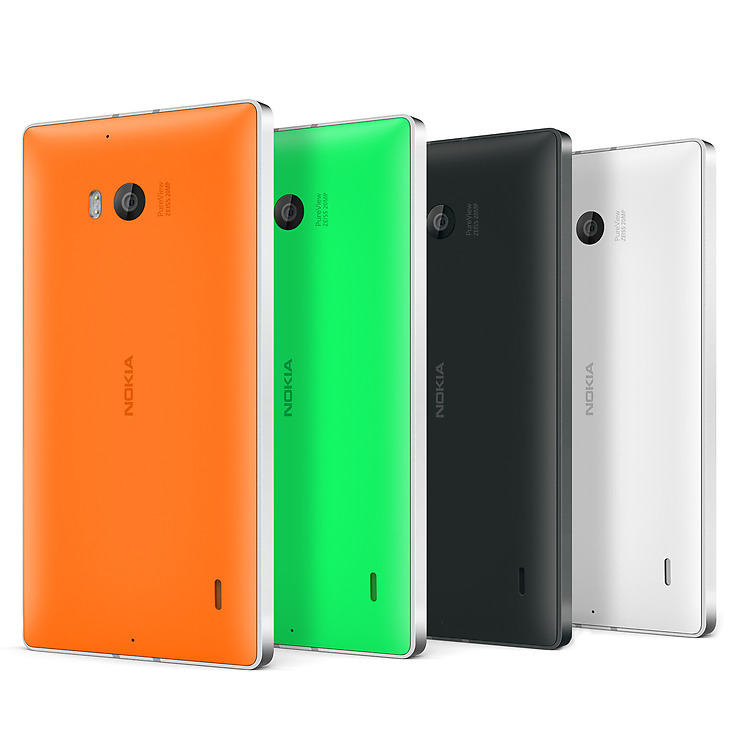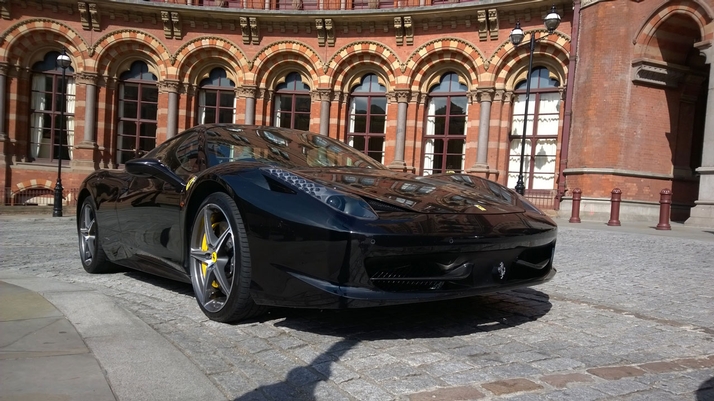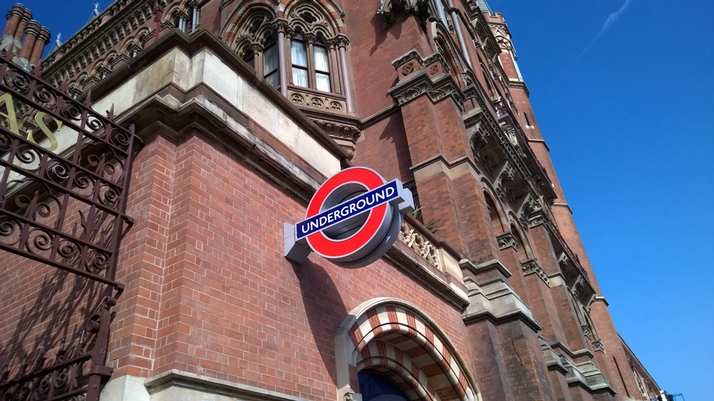If you didn’t know, Microsoft now owns Nokia and is putting all its focus on the Windows Phone platform – no more Android-powered Nokia X devices. Windows Phone 8.1 has now arrived and flying the flag at the top-end is the Lumia 930. It will set you back around £435 on a SIM-free basis which is a good price for a new flagship smartphone but bear in mind that rival devices – namely the Samsung Galaxy S5 and HTC One M8 – are available at a similar price now they’ve been around for a while.
Nokia Lumia 930 review: Design and build
Since jumping on the Windows Phone band wagon, Nokia’s handsets have had a particular style. On the most part, this continues with the Lumia 930 which looks pretty standard from the front. It has that familiar trio of touch sensitive buttons below the screen (back, home and search) and all the physical buttons along the right-hand-side (volume, power and camera). It’s a fairly plain affair but flip the phone over and you’ll be reaching for your sunglasses as Nokia has gone for some neon colours. The firm has become known for colourful devices but the Lumia 930 reaches a new level of loud. Our review sample came in green but there’s also an equally bright orange. We can imagine using them as replacement glow sticks at a festival where they will fit in perfectly. Back to normal life and you’re going to stand out like a sore thumb with this phone which you may be all for but it won’t be to everyone’s taste. Fortunately, if you’re not prepared to go about your daily life with a neon coloured smartphone, the Lumia 930 also comes in black and white. If there’s a colours which you like (there’s no interchangeable covers here), then the Lumia 930 is a nicely put together smartphone. Most Lumia devices are entirely plastic but the 930 has a flat aluminium frame running round the edge which gives is a premium feel. The rear cover is nicely contoured and has a soft finish which feels nice but is very slippery. As we’ve come to expect from Nokia, the build quality is excellent with the glass front subtly curving and meeting with the metal exterior in such a flush fashion that you’ll want to run your finger along it all the time. The downside is that the Lumia 930, like previous Lumia smartphones, is a bit on the chunky side. It’s about 10mm thick which isn’t a particularly pleasing stat for a flagship and it weighs 167g which is a sizable amount. It’s worth pointing out that every Lumia 930 will come with a wireless charger in the box which is a nice touch from Nokia. See also: Nokia Lumia 630 review: Affordable Windows Phone 8.1 smartphone.
Nokia Lumia 930 review: Hardware
To compete with the iPhone and Android handsets, Windows Phone has had to up its game on the hardware front. Over time it has done this and there’s a lot to like on this front with the Lumia 930. The LG G3 leads the way on screen tech with its Quad HD resolution but the Lumia 930’s Full HD display is no slouch – a pixel density of 441ppi is excellent. The AMOLED screen looks superb with bright and crisp colours. At 5in in size, it’s quite large but matches most rival flagships now – minus the iPhone. The screen also has great viewing angles and the ClearBlack technology means that contrast is so good you can barely see where the screen ends and the bezel begins where it is black meets black. Under the illuminous hood is a competent Qualcomm Snapdragon 800 processor which we’ve seen in many high-end Android smartphones. It’s a quad-core processor and here it’s clocked at 2.2GHz and paired with 2GB of RAM. That’s a healthy combination and you can read about the performance on offer below. There’s just one capacity of the Lumia 930 so it’s 32GB or nothing. Although there’s no choice, it’s double the standard amount for a top-end smartphone. Unfortunately there’s no microSD card slot on offer here so that 32GB will have to be enough. As usual, users can get 7GB off free Microsoft OneDrive cloud storage. We’re pleased to see up-to-date 11ac Wi-Fi on-board and there’s also Bluetooth 4.0 and NFC, too. We mentioned wireless charging earlier which is still fairly rare for smartphones so it’s good to Nokia consistently building the feature into its phones. If you’re looking for additional features like a fingerprint scanner, IR blaster or similar then the Lumia 930 isn’t the smartphone for you. It does, as you would expect support 4G LTE networks but does so via a nano-SIM rather than the more common micro-SIM. Another big part of the hardware line-up is the camera which, in the past, Nokia has excelled at – take the Lumia 1020, for example. We’ve dedicated a section to the cameras on the Lumia 930 so see what we think below.
Nokia Lumia 930 review: Performance and battery life
As you’d expect with this kind of hardware, performance is great. Windows Phone 8 zips along on lesser phones, and on the Lumia 930 it runs like a dream. Apps launch quickly and the 930 always feels responsive, whether switching between apps or quitting and returning to the home screen. Battery life is always a concern, especially with a big, bright OLED screen. However, the 930’s battery lasts pretty well. Unless you’re hammering it by watching YouTube or playing games at maximum brightness, there’s enough juice to get you through a whole day, and probably half of the next, too.
Nokia Lumia 930 review: Cameras
The PureView rear camera has a 20Mp 1/2.5in sensor and a Zeiss-branded six-element lens. As well as the standard Windows Phone camera app, you also get Nokia Camera which can be quite confusing at times. Depending on which ‘lens’ you use in Nokia Camera, you’re offered different options and features. Most are a bit of fun rather than for serious photography, such as the ‘living’ images which add a couple of frames of motion to still images to make them appear as super-short video clips. However, other features are more useful such as the smart sequence which takes a series of images and lets you choose the best shot or even choose the best face for each person in the shot – a very handy feature for group shots. Most of the lenses must be downloaded manually, but they’re free and include Panorama, Refocus, Glam Me and Cinemagraph. Nokia Camera also offers decent manual control over shots, including shutter speed, ISO, white balance, focus and more. You don’t get aperture control as this is fixed at f/2.4. Hidden away in the menu, there’s even exposure bracketing, which somewhat makes up for the lack of a dedicated HDR mode (but you’ll have to merge the photos in an HDR program on a PC or Mac). These controls are a huge bonus – especially manual focus – for when you want to be more creative in your photography. As with other high-resolution Lumias (and the Sony Xperia Z2), two images are saved when you hit the two-stage shutter button when using the Nokia Camera app. One is a 5Mp image for easier sharing, and the second is the high resolution version. By default, the aspect ratio is set to 16:9 which crops the top and bottom off and results in a 16Mp image. Switch to 4:3 images and you get a 19Mp still – almost the sensor’s full resolution. Regardless of aspect ratio, there’s a choice of saving just the 5Mp JPEG, or that plus a high resolution version as either a JPEG or DNG RAW file. RAW capture is a massive bonus which will appeal to enthusiasts as even seemingly unusable photos can be rescued in suitable software. We used the Camera RAW converter in Photoshop Elements 11 to fix the following photo – the difference is huge. Original JPG: Edited DNG file: Note that the hi-res images are accessible only when you transfer them to a computer, which means that you’ll be predominantly sharing the low-res 5Mp shots. These are still very good – you’ll be hard pressed to tell the difference in detail levels (you can see a 100 percent comparison below, though – click each to enlarge). 5Mp JPG, 100 percent crop: 19Mp DNG file, 100 percent crop (edited to sharpen and increase contrast and black level): You can use Nokia Reframe on the phone itself, though, which can create a 5Mp version of a cropped 16- or 19Mp image – akin to optical zoom in the sense that you retain all of the original detail. Framing images on the big, bright screen is easy. However, image quality is hugely variable. Many of our shots were out of focus: the contrast-detection AF system often seemed to struggle to focus even in good light when there were plenty of objects or people to lock onto (and things worsened in low light when objects were too far for the AF assist lamp to be any use). When it does focus properly, photos can be excellent. The metering system tends towards underexposure, especially when there’s backlighting such as bright skies. Colour accuracy is lifelike, though, and colours really pop on the OLED screen. Even on a calibrated PC monitor, they appear warm, which makes them look nicer than snaps from other phones which default to colder colours that appear more muted. Until you zoom in and look at the actual pixels images appear nice and sharp, which is fine as long as you’re not planning to crop in too much before posting online or printing enlargements. Here are some unedited photos we took with the 930. These have been scaled down to fit your screen – click each to enlarge to 1280×720 pixels. Videos benefit from optical stabilisation, which makes for less shaky footage and smoother panning. Videos shot at 1080p look sharp on screen, but they don’t stand up to close scrutiny on a PC monitor. It’s pretty good as camera phones go, but there’s still a lack of outright detail. Sound quality is good, as is stereo separation.
For what it’s worth, the front camera has a 1.3Mp sensor and takes reasonable selfies. It’s better put to use for video calls via Skype, though. Overall, then, the 930 is a decent choice if you’re looking for a phone with a good-quality camera, and the DNG files are very welcome.
Nokia Lumia 930 review: Software
As you may have gathered by now, the Lumia 930 comes with Windows Phone 8.1 which, we feel, is still in third place behind iOS and Android in the mobile platform market but has many new features which make for a good experience. Windows Phone users have been gagging for some kind of proper notification system for a long time and that’s exactly what Microsoft provides in Action Center. It drops down from the top of the screen just like iOS and Android giving a decent overview of all your notifications plus four customisable quick settings like Wi-Fi and Bluetooth. The tiled Start Screen is also improved with up to six columns and the ability to set a photo or image as the background rather than just block colour making things feel far more customisable. Windows Phone 8.1 makes advancements in other areas too, including a Word Flow keyboard allowing swipe gesture typing, a new calendar with integrated weather and Sense apps which help you manage data and storage. Cortana, Microsoft’s digital assistant which rivals Siri, will make things even better but hasn’t launched in the UK yet. Although there are some decent pre-loaded apps, it’s an area which is lacking when compared to iOS and Android. Any new app which comes out is almost guaranteed to be on Apple and Google platforms but there’s pretty much always a question mark over Windows Phone support. Some big names have been added but there’s a gaping hole when it comes to apps which you need for third-party devices. Buy a Sonos system, a Fitbit, the Tado heating system – the list goes on – and you’ll find there’s no app for in on Windows Phone. EDIT: There is now an official Fitbit app with Bluetooth synching. The consistent thing we’re hearing from manufacturers is that Windows Phone simply doesn’t have enough market share for it to be worth the effort developing the app. Read: How to download Windows Phone 8.1
Tech Advisor’s Reviews Editor, Chris has been reviewing all kinds of tech for over 10 years and specialises in audio. He also covers a range of topics including home entertainment, phones, laptops, tablets and more.















